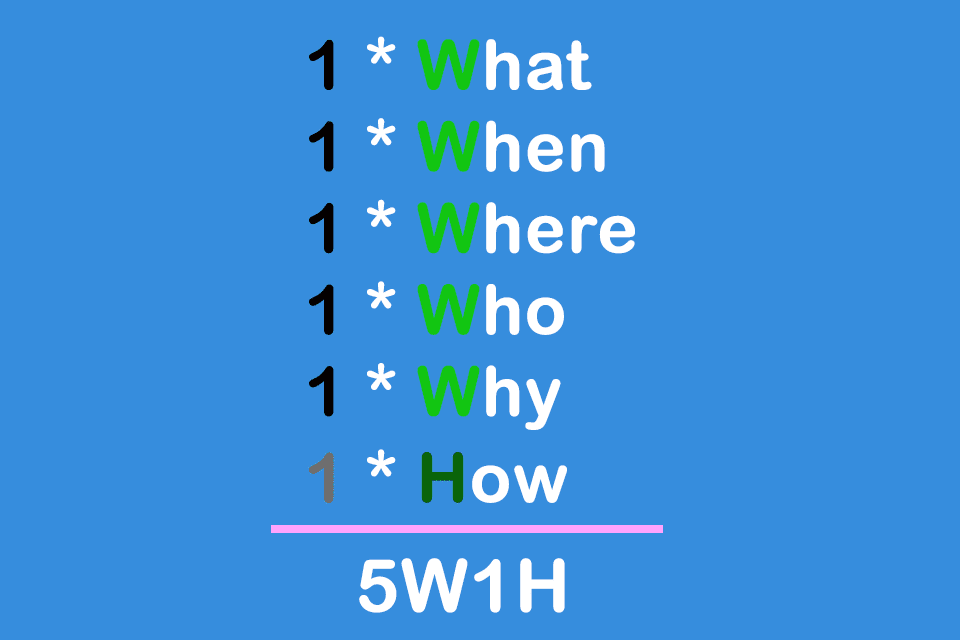What is the 5W1H Method?
5W1H method – solving a problem with 6 questions
“If I had an hour to solve a problem I’d spend 55 minutes thinking about the problem and 5 minutes thinking about solutions” Albert Einstein is reputed to have said.
One way of dealing with a problem and its causes in detail in a first step and only then with the solution to the problem is the 5W1H method. It uses 5 questions to narrow down a problem before looking for the solution with a 6th question.
5W1H – also known as the Kipling Method – is based on a poem published by Rudyard Kipling in the book “The Elephants Child”¹ in 1902:
„I Keep Six Honest Serving Men“
I keep six honest serving-men
(They taught me all I knew);
Their names are What and Why and When
And How and Where and Who.
I send them over land and sea,
I send them east and west;
But after they have worked for me,
I give them all a rest.
I let them rest from nine till five,
For I am busy then,
As well as breakfast, lunch, and tea,
For they are hungry men.
But different folk have different views;
I know a person small—
She keeps ten million serving-men,
Who get no rest at all!
She sends’em abroad on her own affairs,
From the second she opens her eyes –
One million Hows, two million Wheres,
And seven million Whys!
5W1H in detail
The 5W1H method is based on 6 open questions that give it its name:
- What?
- When?
- Where?
- Who?
- Why?
- How?
Basically, the method is an instrument of problem analysis, in which questions about the
- subject,
- time,
- persons involved or affected,
- location and
- cause
be asked before the question of resolution is discussed.
5W1H example
Interestingly, the 5W1H method can be used not only for problem definition followed by solution finding, but also from the beginning for joint problem description and solution finding.
- What exactly is the problem? And: What should the solution contain?
- Why is it a problem? And: Why is a solution needed?
- Who reported the problem? Who is affected by the problem? And: Who benefits from the solution? Who could additionally benefit from the solution?
- Where does the problem occur? And: Where could the solution be applied?
- When does the problem occur? And: When should the solution be available?
- How can the problem be solved? How often does the problem occur? And: How do we know if the problem has actually been solved?
The aim of this method is to gain a common, detailed understanding of the problem in order to subsequently develop a suitable solution.
Under certain circumstances, the procedure sounds much easier in theory than it is in practice, because the question of why is not always easy to answer. In practice, it is therefore advisable to
- to ask several people about the reasons,
- have data, facts and figures at hand to analyse the causes,
- carry out the search directly on site, i.e. at the point where the problem becomes apparent, and
- if necessary, introduce several measures or try out solutions step by step.
In case of doubt, alternative approaches such as the 5-Why method or brainstorming can also be used.
Impulse to discuss
How can the willingness of affected people to actively use the 5W1H method be increased?
[1] The Kipling Society: I keep Six Honest Serving Men
Here you can download the Ideation Whitepaper free of charge. It explains many more practical methods of idea generation in detail.
If you like the article or would like to discuss it, please feel free to share it in your network. And if you have any comments, please do not hesitate to send us a message.
Here you will find additional information from the t2informatik Blog:



